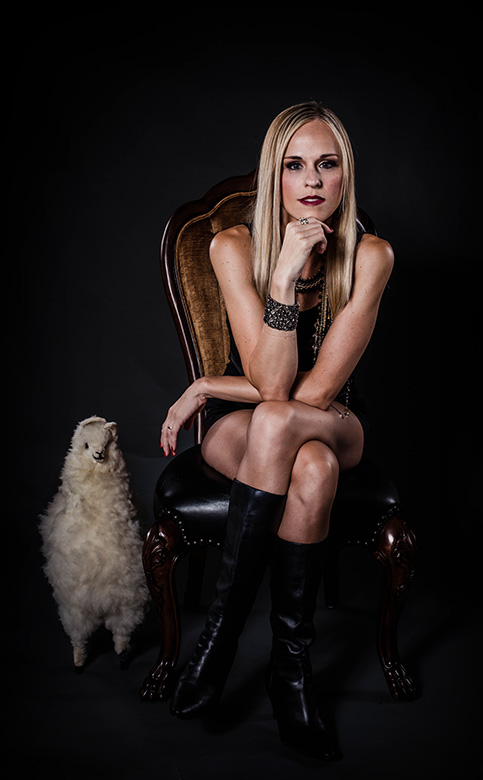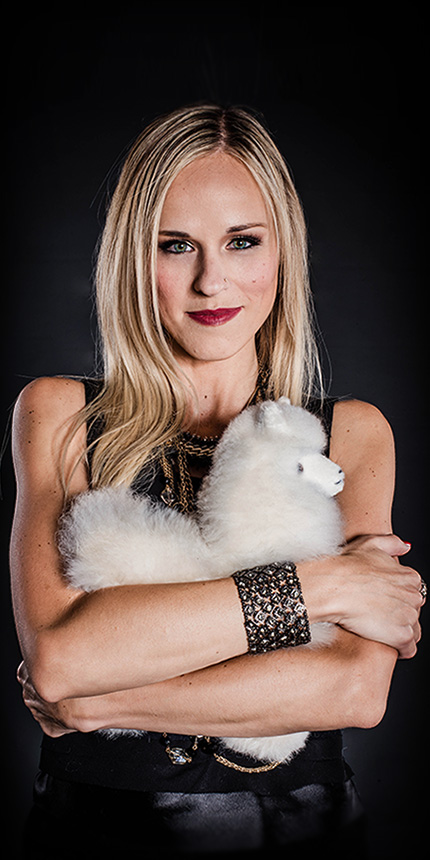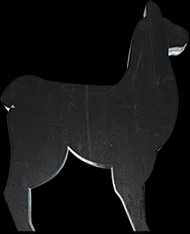
Lana’s Llama provides an alternative to other brands that use endocrine disrupting, cancer causing and highly carcinogenic agents in their clothing. With the daily dose of chemicals and environmental toxins humanity is already exposed to, Lana’s Llama clothing helps to minimize the damage by reducing the exposure of toxins originating in your clothing. From the fabric, to the lining, trims, buttons, dyes, thread and clothing labels we do our best to create the least chemically tainted garment possible.
We adhere to fabrics made of 100% natural fibers, which means no synthetic fabrics such as polyester, nylon, spandex, acrylic, rayon, acetate or any other petrochemically based fiber. We never use chemicals to make clothing softer, stain resistant, odor resistant, fireproof, moth proof, water repellent, anti-bacterial, anti shrink or to reduce static and wrinkles.
While others claim to be “eco-friendly,” selling clothing made of recycled polyester (made from toxic plastic bottles), we choose to not use it at all! Buzzwords such as eco friendly, fair trade and green are used deceptively by numerous companies, but none of these words address the harmful effects of toxins on the human body.
Research has proven that the vast majority of chemicals used to create synthetic clothing create problems such as infertility, hormone disruption, respiratory diseases, contact dermatitis, immune dysfunction, suppression of the lymphatic system and cancer to name a few. There are thousands of cases of people who report allergic reactions when they wear synthetic fabrics.
Lana’s Llama is your virtual mom and pop shop that works with USA based sewing contractors who maintain a high standard in quality as well as healthy working conditions for their sewers. Our garments are not mass produced in sweat shops then sprayed with formaldehyde before being shipped from China. We think all of these things matter.
Lana’s Story
 Lana, the founder of Lana’s Llama clothing is highly sensitive to chemicals. It was a matter of time before she discovered the irritating chemicals found in her synthetic fabric clothing.
Lana, the founder of Lana’s Llama clothing is highly sensitive to chemicals. It was a matter of time before she discovered the irritating chemicals found in her synthetic fabric clothing.
While researching, she found a plethora of studies on the toxicity of clothing. One test was conducted that included 20 of the largest clothing brands and every single one of them was revealed to have traces of hazardous chemicals. Some of these chemicals are incorporated deliberately within the fabric, while others are residues remaining from the manufacturing process. Synthetic fabrics always come from a base that is chemically derived.
Many in the fashion industry will argue the safety of toxic chemicals used in their clothing, which is no wonder because synthetic fabrics come from petrochemicals and the petrochemical lobby is massive and so is the global apparel industry that produces over $1 trillion a year.
Since Lana had already removed toxic products from her life, removing synthetic fabrics from her closet was the next logical step. However, it was astounding to Lana that with all the talk of “going green” the organic, non toxic options for clothing were miniscule in comparison to toxic manufacturing processes. Further, most organic clothing brands manufacture clothing blended with synthetics.
Lana also became frustrated after hearing buzzwords like sustainability, fair trade and eco-friendly only to find that some companies were claiming to be “green” just because they used less water in the office, recycled or used a specific light bulb. Never did she hear about companies vowing to not use synthetic fabrics, considering that their origin is found in petrochemicals.
Slowly replacing her wardrobe, Lana only purchased clothing made of 100% natural fiber fabrics but found that some natural fiber fabrics were still irritating to her skin. She learned that natural fiber fabrics, not made of organic fibers, are grown using numerous carcinogenic pesticides and then more toxic chemicals are used during the dye and finishing process.
But because synthetic fabric dominated the clothing industry, it was becoming harder and harder to find a 100% natural fiber garment, even in the high end stores. Fed up but inspired to the fill the void, Lana started her own clothing line free of synthetic fabrics, organic whenever possible, utilizing the beautiful renewable resources found in nature while limiting the daily exposure to toxic chemicals.
Why the Name
 Llamas have always held a special place in Lana’s heart. In fact, llama was her nickname as a young girl.
Llamas have always held a special place in Lana’s heart. In fact, llama was her nickname as a young girl.
The Llama is one of the oldest domesticated animals in the world. They are intelligent, graceful creatures who act as guardians for other animals on the farm and are bred for hair fiber, trekking and for companionship. They have a gentle temperament and an inquisitive character. Llamas are especially known for their unique humming sounds and their tendency to spit in a dispute.
Fittingly, Lana means wool in Latin and wool has been used as a clothing fiber since ancient times. It is also said that alchemists burned zinc and called it lana philosophica, Latin for “philosopher's wool,” because it collected in wooly tufts.
Humorously, the Llama Association of North America is called LANA.
